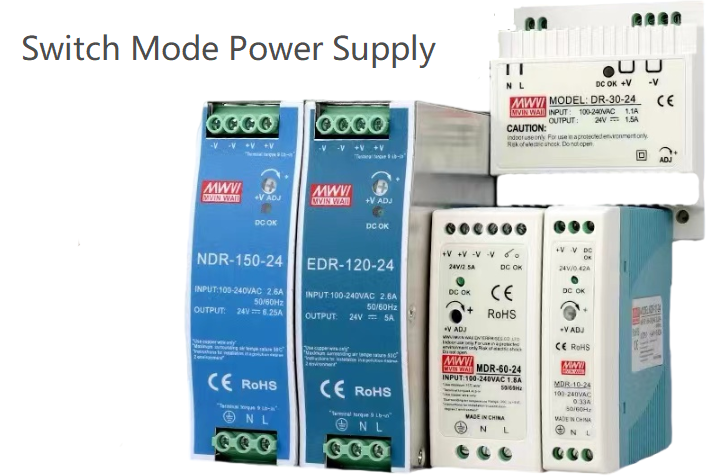PI PO AI AO DI DO signals are often used to represent different types of input and output signals in electrical automation systems. For electric meters, these signals represent the way information is exchanged between the electric meter and other devices. This article will explain each signal type, its function, and provide a comparison of these signals in energy meters.
AI signals
Analog Input (AI) signals are used to receive continuous variable data from physical devices, typically in the form of current or voltage. These signals are commonly found in industrial systems and energy meters, where they provide real-time data on various physical parameters.
For example, an energy meter might convert a current value from a current transformer (CT) into a 4-20 mA or 0-10V signal. This signal is then sent to a Distributed Control System (DCS) or Supervisory Control and Data Acquisition (SCADA) system. Through a process of conversion, the system displays the actual measured value, such as current, voltage, or power, on the operator’s interface.
DI signals
Digital Input (DI) signals, on the other hand, are binary in nature, meaning they only have two possible states: on (1) or off (0). These signals are used to detect simple switch-like states, such as whether a device is open or closed, or whether a circuit is active or inactive.
DI signals are widely used in energy meters and industrial control systems to track the status of electrical components, such as circuit breakers or relays. For example, when a breaker is closed, the DI signal might change from off (0) to on (1), indicating that the circuit is complete and the device is energized.
PI signals
Pulse Input (PI) signals are digital signals that represent a fixed amount of energy consumption or utility usage. Each pulse from an energy meter represents a specific amount of consumption, typically in kilowatt-hours (kWh). These pulses are generated by energy meters to count and monitor electricity or other utility usage.
For instance, an energy meter might generate a pulse every time 1 kWh of electricity is consumed. The counting of these pulses allows for the monitoring of electricity consumption over time. This data is then used by higher-level systems to track and analyze energy usage, optimize consumption, and generate reports.
AO signals
Analog Output (AO) signals are the opposite of AI signals. While AI signals receive continuous input, AO signals are used to send continuous data to control devices, such as actuators or motors. These signals control the operation of equipment by transmitting values that vary within a specific range, usually 4-20 mA or 0-10V.
For example, in a variable frequency drive (VFD) system, an AO signal is used to control the speed of a motor. If the desired speed is set to 40 Hz, the system sends an AO signal corresponding to that speed, allowing the motor to run at the specified frequency. The use of AO signals ensures that equipment operates within defined parameters and helps regulate the performance of industrial systems.
DO Signals
Digital Output (DO) signals are used to send binary (on/off) control signals to other devices in the system. DO signals trigger actions such as starting or stopping a machine or turning an indicator light on or off. These signals are used for controlling devices that can only be in one of two states: active or inactive.
For instance, a DO signal can be used to send a start or stop command to a motor control circuit. When a start command is given, the DO signal will be “on,” and the motor will start running. When the signal is “off,” the motor stops.
PO signals
Pulse Output (PO) signals are digital signals produced by metering devices or sensors to represent the measured amount of energy or resource consumption. Each pulse corresponds to a specific amount of energy or resource used, often tracked for utilities like electricity, gas, water, or heat.
No matter whether multi channel energy meter or multifunctional power meter, PO signals represent specific energy consumption, and metering devices generate pulses periodically as energy is consumed. These pulse signals can be received by the system for further processing, such as data logging, efficiency analysis, or generating reports.
Difference between them
To better understand the differences between these signals, the following table compares AI, AO, DI, DO, PI, and PO signals in terms of their description, examples, and usage:
| Type | Description | Examples | Usage |
| AI | Receives continuous signals from the physical world, usually from sensors. | Temperature sensor, pressure sensor, current transformer. | Used for measuring continuously varying variables like temperature, pressure, current, etc. |
| AO | Sends continuous signals to control devices. | Variable speed drive (VSD), control valve, damper. | Used to control devices that operate at different levels, such as motor speed or valve position. |
| DI | Receives binary signals (ON/OFF) from the physical world. | Limit switch, push button, proximity switch. | Used for detecting states such as ON/OFF, powered/unpowered, etc. |
| DO | Sends binary control signals to devices. | Motor starter, solenoid valve, indicator light. | Used for controlling devices that can either be ON or OFF, such as starting motors or opening valves. |
| PI | Receives pulse signals representing energy or resource consumption. | Energy meter pulse input. | Used for monitoring energy consumption, typically with each pulse representing a fixed amount of energy usage (e.g., 1 kWh). |
| PO | Outputs pulse signals representing energy or resource consumption. | Energy meter pulse output. | Used for recording energy or resource usage, with each pulse corresponding to a fixed amount of energy or resource consumed. |
Conclusion
In energy metering and industrial automation systems, AI, AO, DI, DO, PI, and PO signals play crucial roles. These signals enable the measurement, control, and monitoring of various electrical parameters, making it possible to track energy consumption, control devices, and ensure efficient system operation. Understanding and correctly applying these signal types helps optimize system performance, improve energy management, and enhance device safety and operation accuracy. Therefore, it is essential to understand the working principles and applications of each signal type to optimize the performance of industrial control and energy metering systems.






